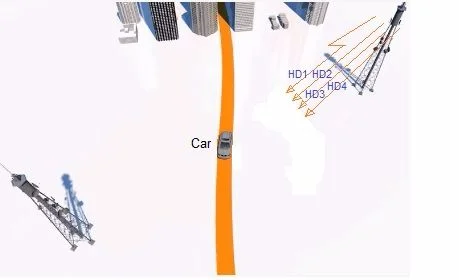HD Radio technology basics,HD Radio Stations AM FM spectrum
This page provides HD radio technology basics including features. It mentions how HD radio technology works and covers basics of HD radio stations including frequencies available. The HD radio AM spectrum and FM spectrum used by HD radio stations are also described.
The term HD stands for High Definition. Earlier days radio broadcasting was purely analog in nature. With advancement in technologies, we have now HD radio which provides superior quality of sound anywhere and everywhere including lots of additional features which lures customers to use HD radio. It just requires HD radio tuner to be installed on your car at very affordable cost and you will have hundreds of programs and thousands of radio stations available at your service.
The terms HD Radio™, HD are proprietary trademarks of "iBiquity Digital Corporation".
HD Radio Features
Following are the features of HD radio technology.
• Digital AM and FM
• More HD radio stations on the go while you are driving and at home
• Digital Sound deivers crystal clear audio with no static, hiss, or pops
• No subcription or monthly charges
• No data charges
• 4 active channels are available to tune from
• Signal received in the car is very clear as if you are in the studio itself
• HD radio stations deliver station IDs, Artist name and more
• HD radio network provides hundreds of new programs and thousands of HD radio stations
• The HD radio receiver technologies provide shopping cart of the songs you love,
provides real time traffic updates on the screen, get weather forecasts of hundreds of cities,
gets latest news updates, sports stations, gives fuel prices available at nearby fuel stations etc. in real time.
How HD Radio technology works | HD Radio Stations

• Each HD station carry upto 3 additional radio channels.
This additional active channels will provide more listening options (HD1, HD2, HD3, HD4) for the user.
• Both audio and data can be broadcasted using HD radio stations with the help of digital signal.
This digital signal is embedded on standard radio station's analog signal with concept called
In-Band On-Channel (IBOC).
• Using this concept two OFDM subcarrier sets are superimposed above and below the analog
carrier center frequency as shown in the figure below. Based on the subcarrier scaling
there are different modes viz. hybrid, extended hybrid and all digital. This is described below.
• Hence receivers can listen to standard analog channel as well as HD channel.
HD format allows radio stations to broacast one or multiple programs in addition to
analog channel program.
• HD radio stations use carrier frequencies in the range 535KHz to 1705KHz for AM broadcasting
and in the range from 88 to 108 MHz for FM broadcasting. Following diagrams depict HD radio FM AM spectrum and HD radio AM spectrum.
HD Radio AM spectrum and FM spectrum

The figure-2 depicts HD radio AM spectrum. As shown primary channels exist from 10 to 15 KHz and secondary channels exist from 5 to 10 KHz above and below the analog carrier frequency.
OFDM modulation scheme is being used for digital spectrum above and below the analog signal. The complex modulation schemes such as BPSK, QPSK, 16-QAM and 64-QAM are used to map data on to subcarriers of OFDM spectrum.
FCC has specified power spectrum masks for both AM spectrum and FM spectrum for HD radio. This will specify power emission limits for both of these spectrums. Hence all the HD radio stations broadcasting HD radio signal should comply with these emission mask requirements/specifications. Refer Doc. No. SY_SSS_1026s for HD radio FM spectrum mask and Doc. No. SY_SSS_1082s for HD radio AM spectrum mask specifications published by NRSC ( National Radio Systems Committee ).

Above figure-3 depicts HD radio FM spectrum. As shown OFDM >> is transmitted along with the analog carrier either above or below the reference radio carrier frequency. OFDM subcarriers start at approx. +/- 101 KHz from analog carrier and will be located upto +/- 198 KHz from analog carrier center frequency. It uses digital modulation techniques such as QPSK so that more number of bits can be carrier by single subcarrier. For example QPSK carriers 2 bits per subcarrier, 16QAM carries 4 bits per subcarrier and so on.
HD Radio Standard References
NRSC maintains standards for radio broadcasting and reception of it.
The standards for AM and FM radio can be downloaded from following link.
https://www.nrscstandards.org/standards.asp
Other Digital Radio and Analog Radio Systems
TETRA Radio System
Difference between TETRA and TETRA2 system
APCO-25 versus APCO-16
Opensky Radio System
DMR-Digital Mobile Radio
iDEN-Integrate Digital Enhanced Network
